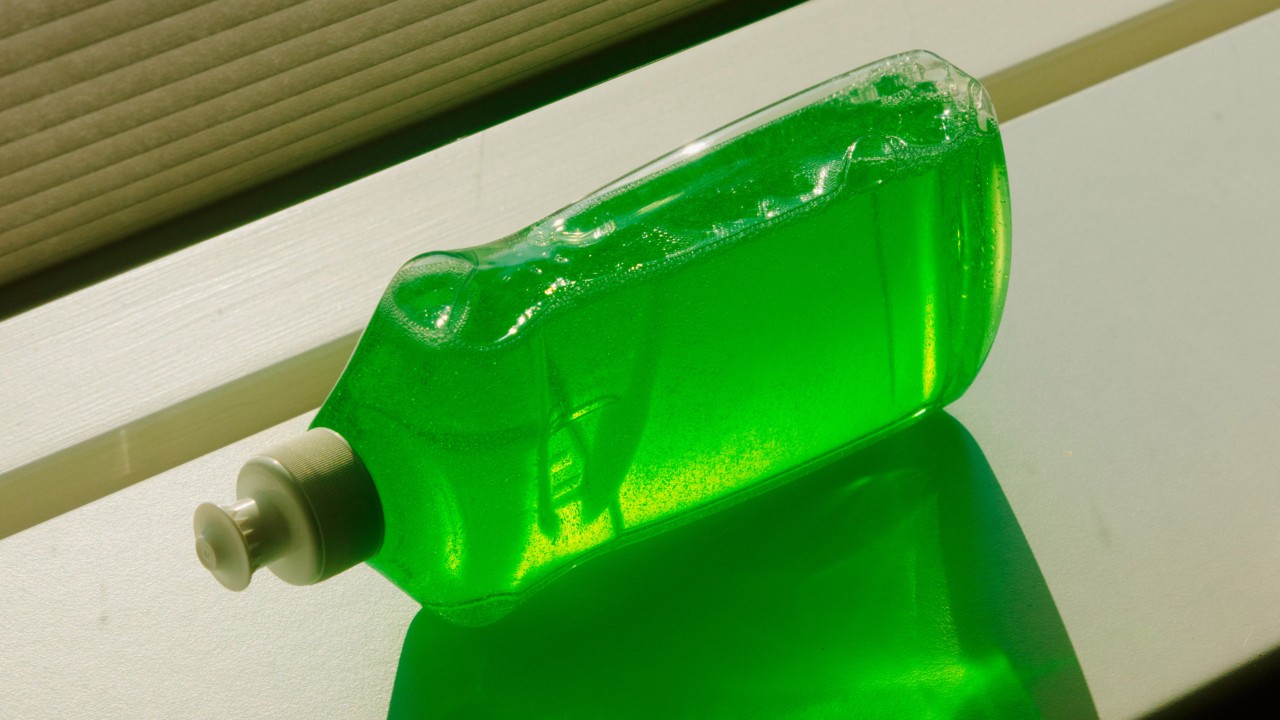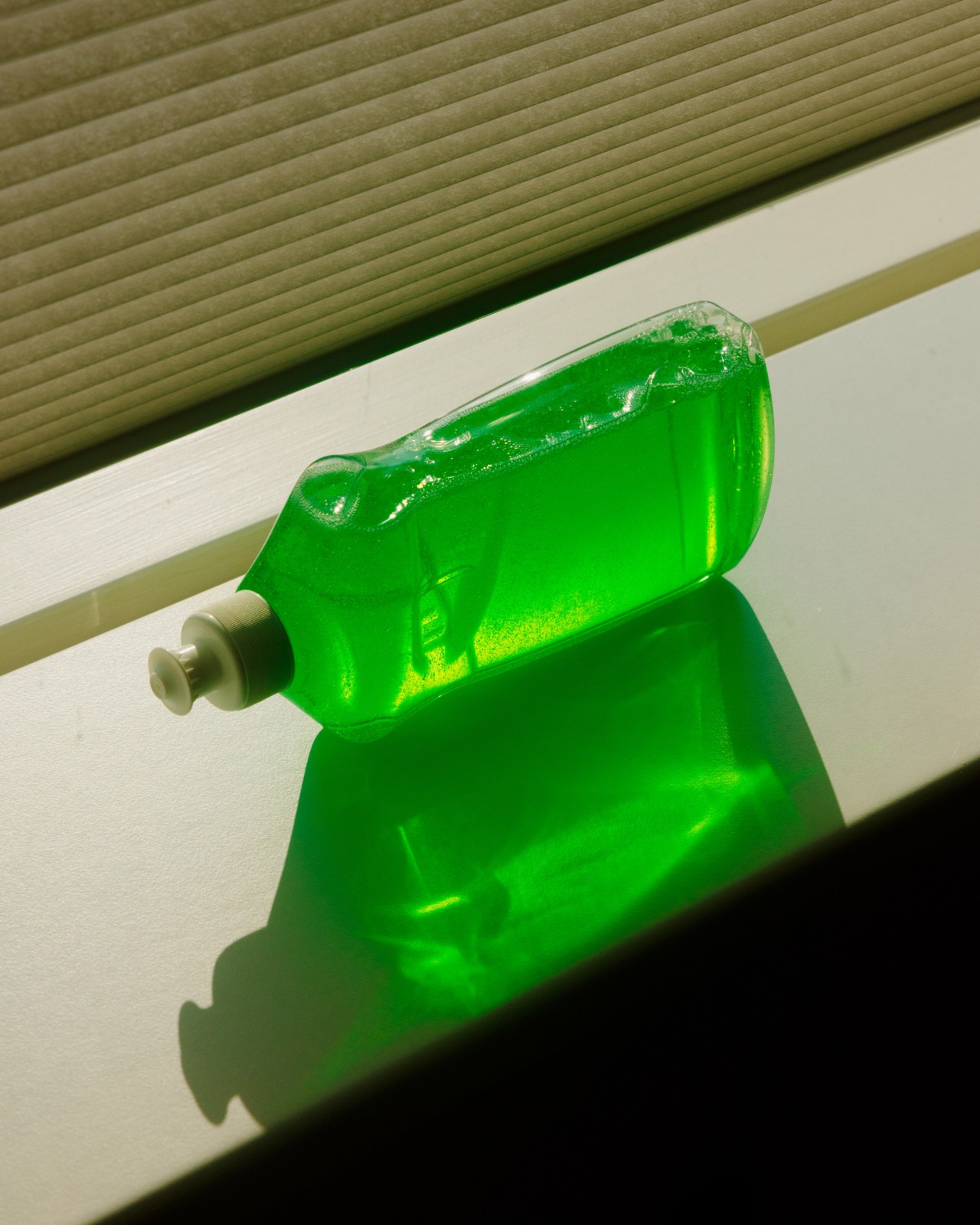

Photograph by Tobias Nicolai / Connected Archives
WORDS BY ELISE CUTTS
Per- and polyfluoroalkyl substances, or PFAS, aren’t called “forever chemicals” for nothing. This diverse group of some 10,000 chemicals is among the longest-lived compounds ever devised. Most familiar as nonstick coatings in consumer products, PFAS linger for centuries in the environment—and years in our bodies. Some are toxic. Certain PFAS increase cancer risk, blunt vaccine response, meddle with hormones, and raise cholesterol, according to the EPA.
“PFAS are in your blood, and PFAS are in my blood, in everybody’s blood. In my opinion, we are in a PFAS crisis worldwide,” said environmental chemist Dr. Chiel Jonker of Utrecht University in the Netherlands.
There’s currently no practical way to destroy PFAS on a large scale, said Jonker. However, small-scale lab studies have revealed several ways of un-forevering forever chemicals. Now, researchers have found yet another method—and, for the first time, showed that it’s possible to reclaim the fluorine contained in PFAS in a useful form. The researchers tested the method on 27 different PFAS, including some of the hardest to degrade, and claim it should work for all classes of forever chemicals. The results were published March 26 in the journal Nature.
“To reform this terribly regarded waste into something useful—this is a beacon type of study, showing people this is possible,” said chemical engineer Dr. Qin Li of Griffith University in Australia, who was not involved in the study.
Jonker, who was also not involved in the study, is less sanguine. “It’s nice in the laboratory,” he said. “But you can never scale this up to such a scale at which we can remediate the world.”
Like many scientific discoveries, this one was a surprise. Study author Dr. Véronique Gouverneur, a chemist at the University of Oxford, wasn’t researching PFAS degradation. She was looking for a better way to extract fluorine from a mineral called fluorspar, the source of practically all fluorine used in the chemical industry. Fluorspar doesn’t give up its fluorine without a fight. It requires concentrated sulfuric acid, scorching temperatures, and a notoriously deadly intermediate product of hydrofluoric acid.
Gouverneur’s team recently invented a milder method to liberate fluorine from fluorspar. The technique starts with pulverizing fluorspar in a ball mill—a grinder filled with metal balls—together with salts containing potassium and phosphates. This process breaks up fluorspar, allowing phosphates to slip in and bond to fluorine, explained study co-author Dr. Robert Paton of Colorado State University. This produces phosphate salts containing fluorine, which can be recovered in forms useful for the chemical industry.
While testing this method, Gouverneur’s mentee Dr. Long Yang noticed that his experiments yielded more fluorine-containing salts than expected when the ball mill was sealed with a ring made of Teflon—a PFAS—instead of one made of rubber. Teflon is extremely hardy, but it was clearly breaking down.
“To reform this terribly regarded waste into something useful—this is a beacon type of study, showing people this is possible.”
The team’s new PFAS degradation method grew out of this accidental discovery. It starts with ball-milling PFAS with phosphate salts to produce a black solid (the color comes from carbon). That solid gets suspended in water and centrifuged to separate the carbon from a clear liquid portion. Once the water evaporates, fluorine-containing phosphate salts are left behind. These can be collected and processed into industrially useful forms.
Gouverneur and Paton imagine a future in which PFAS are part of a circular economy in which little goes to waste. Reclaimed fluorine might one day be recycled to make new fluorochemicals, including PFAS. That might sound backwards, but some applications of forever chemicals are hard to work around. About 20% of commercial drugs contain fluorine. Some of them, including Prozac, are PFAS. In hospitals, PFAS help keep surgical tools, medical implants, and innumerable other pieces of vital equipment sterile and safe. PFAS are in the special fabrics that protect firefighters from flames and health care workers from bodily fluids and pathogens. And a fluorochemical called PVDF is an important component of electric car batteries.
Achieving a circular PFAS economy requires an industrial-scale operation—far larger than the demonstration in this study. The study authors appear hopeful that this is possible; they patented their method, and Gouverneur co-founded a spin-off company called FluoRok with her colleague, Dr. Gabriele Pupo. FluoRok’s website states that its mission is to “develop [hydrofluoric acid]-free fluorination processes” and that its scientists are “working to further develop and scale up our technology.”
Jonker, however, is skeptical that the new method can be deployed at scale. The energy demands of doing so also concern him. It may be possible to upcycle some PFAS in certain contexts in the future, he conceded. But PFAS pollution is causing very real problems right now. In Jonker’s home country, the Netherlands, PFAS levels in eggs from backyard chickens are so high that the National Institute for Public Health and the Environment has advised people to stop eating them; the factory-farmed alternatives in supermarkets are less contaminated.
“This is not going to solve the problem,” Jonker said. “It’s just one spark of hope.”
Gouverneur’s hope burns a bit brighter than a spark. But she’s clear that her discovery alone won’t rescue us from PFAS.
“The PFAS problem is detection in the environment, is removal, is destruction,” she said. The new method addresses neither detection nor removal, but it does add a new dimension to destruction: not letting the “F” in PFAS go to waste.
Could ‘Forever Chemicals’ Be Upcycled? A New Study Says Yes.